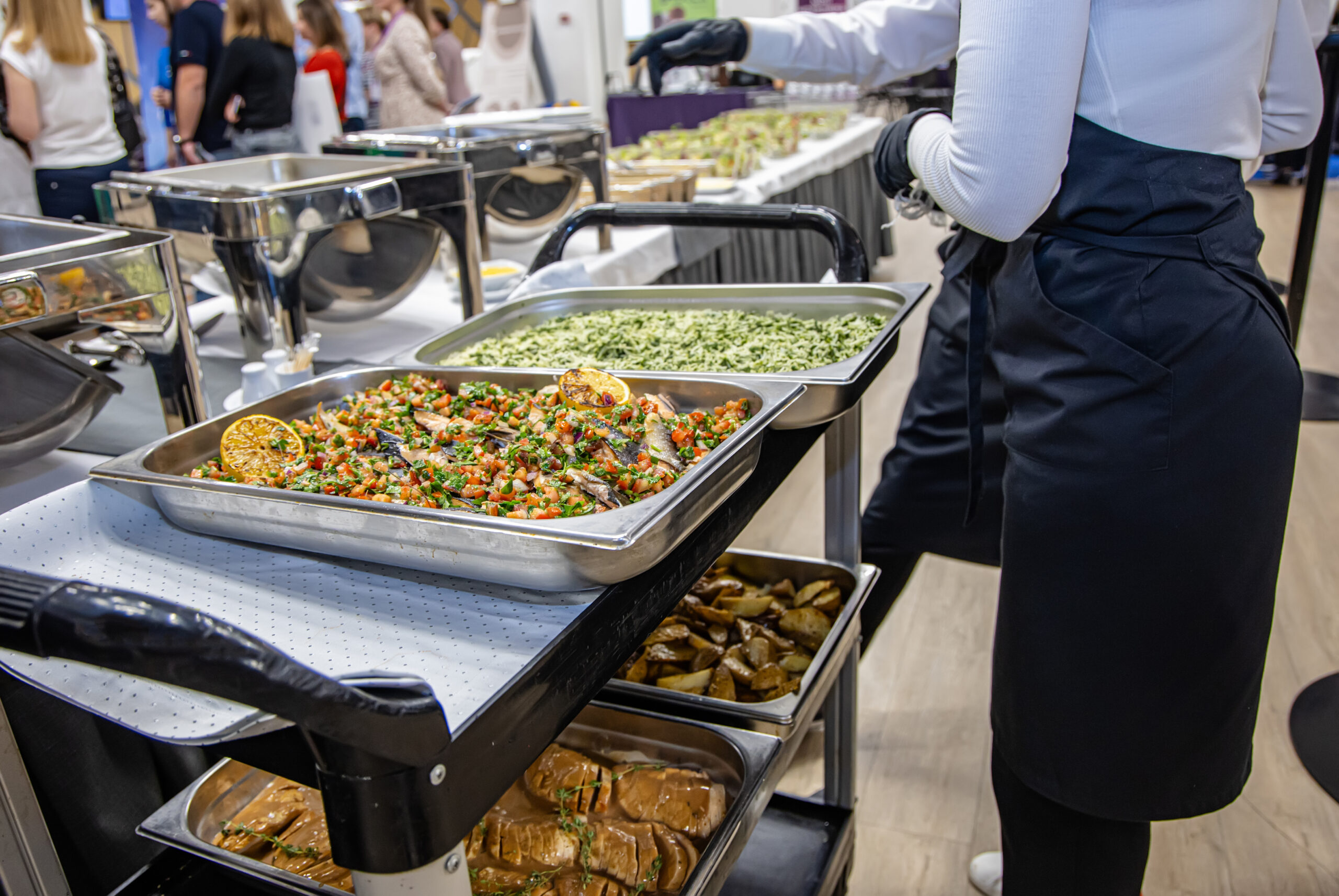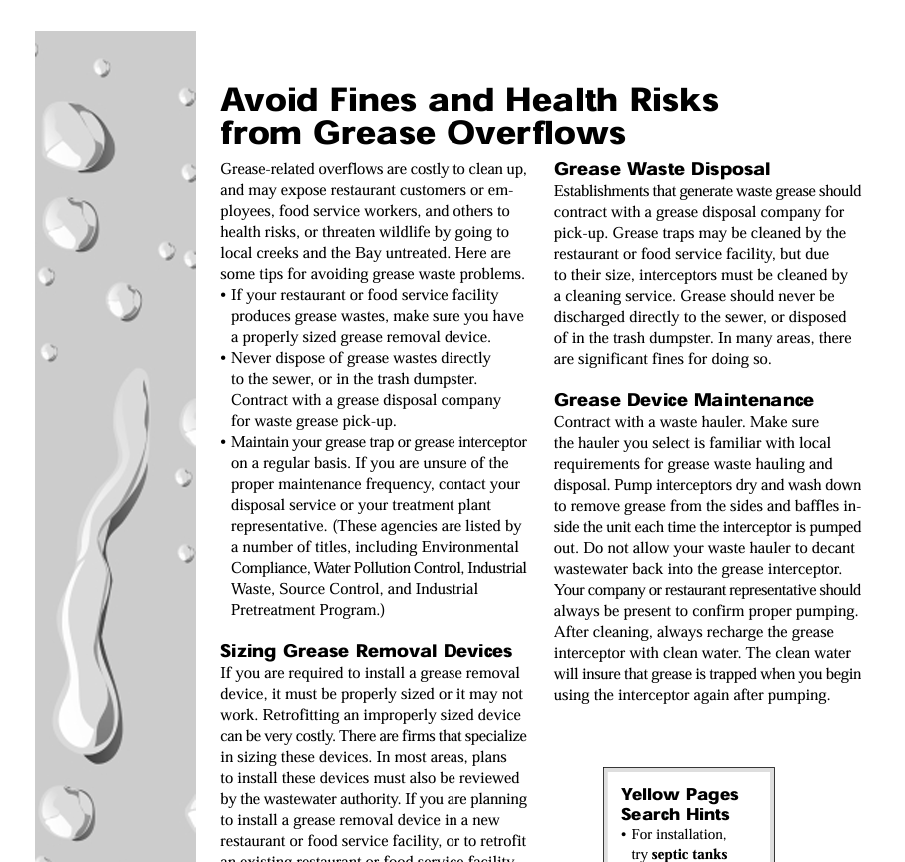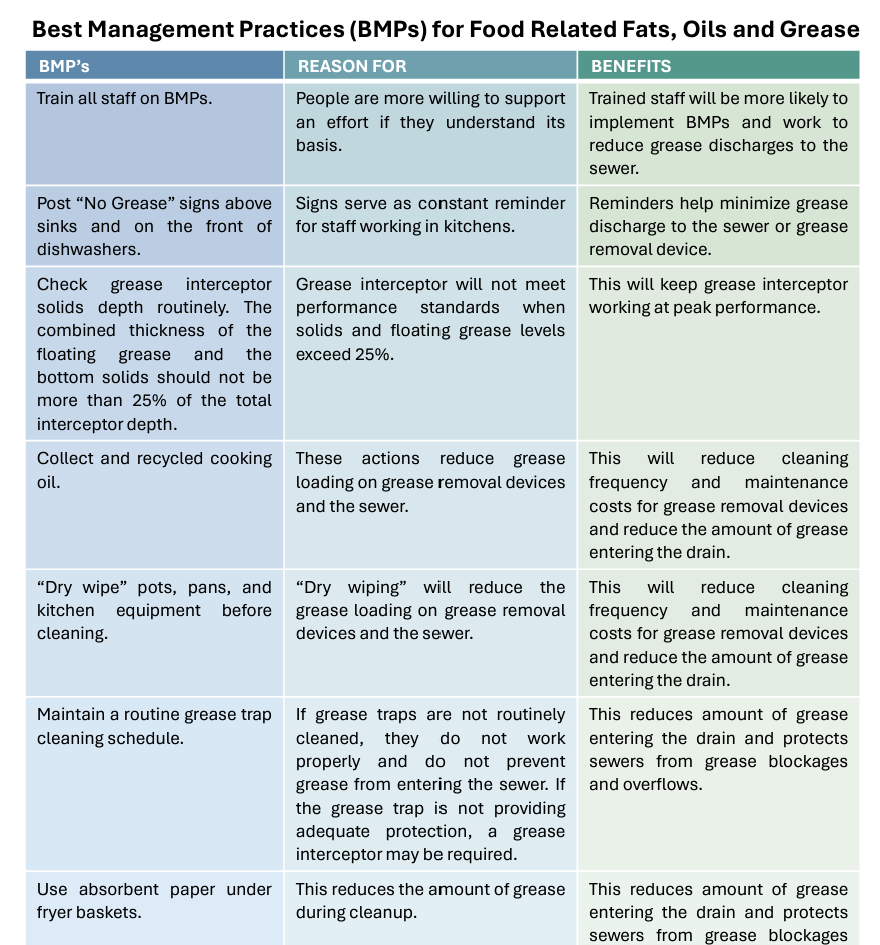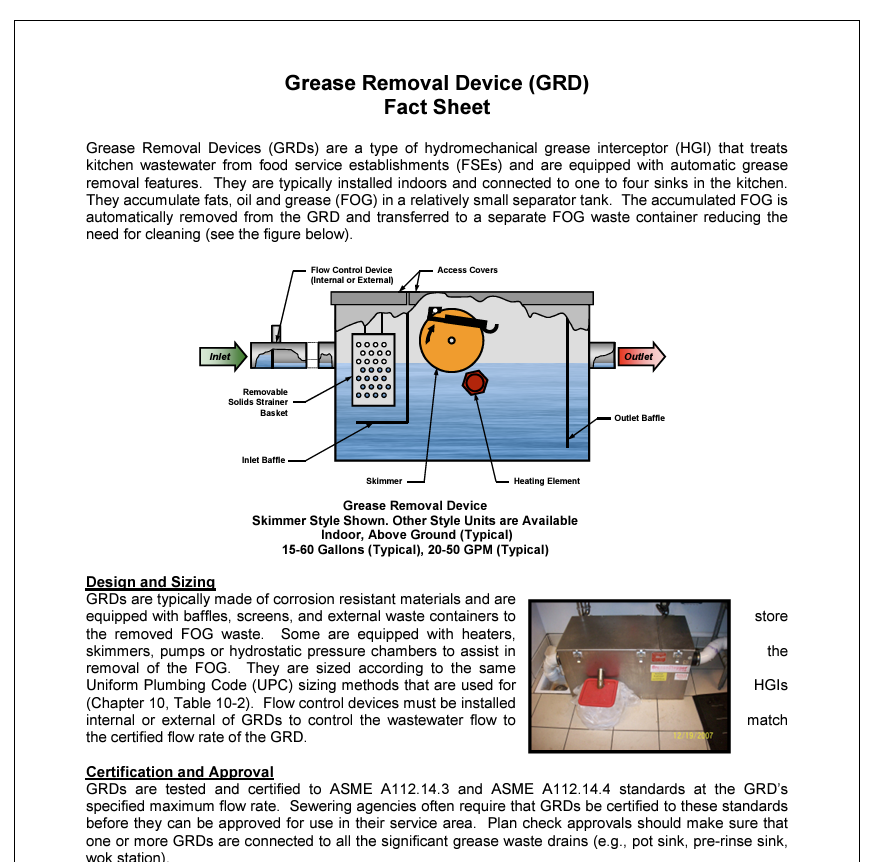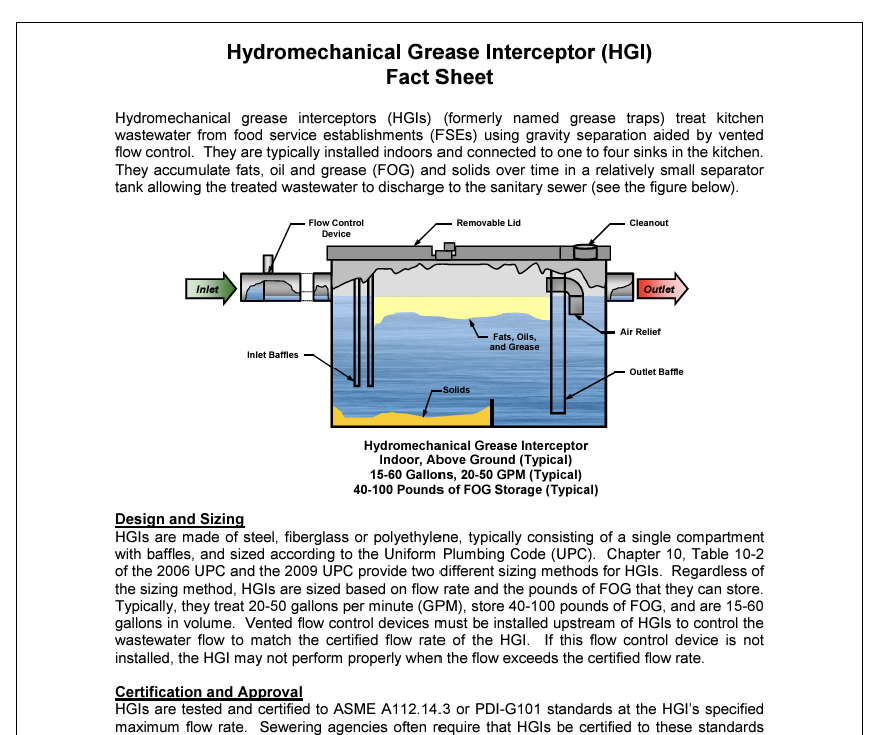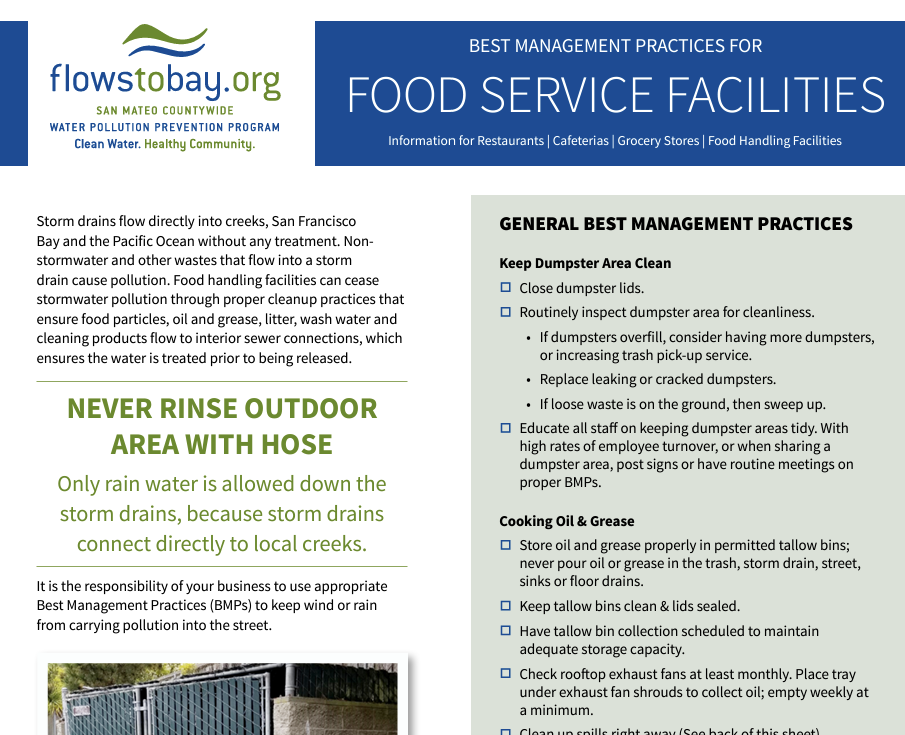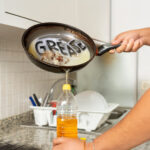Fats, oils, and grease (FOG) are a leading cause of sewer clogs and overflows, which can cause health hazards, damage building interiors, and threaten the environment.
FOG can get into the sewer system from household drains as well as from poorly maintained grease traps in restaurants and other businesses. Never pour fats, oils, or grease down the drain!
Four Easy Steps to Manage FOG
- For small amounts, wipe food and grease out of pots before washing and discard into the compost (or trash if compost is unavailable)
- For large amounts, collect and recycle used cooking oil (your local wastewater agency can help you find a safe disposal site)
- Clean grease interceptors and traps on a routine schedule
- Use absorbents to clean up greasy spills before mopping
Resources
Training Staff on Proper FOG Management

No Grease Down the Drain! Posters for Restaurants in Spanish, English, Vietnamese, Chinese, and Korean
Types of Grease Interceptors
Grease Removal Devices for food service establishments
Hydromechanical Grease Interceptors (“Grease Traps”) for food service establishments
Gravity Grease Interceptors for food service establishments
General Best Management Practices for Food Service Providers*
*Please note that these tips come from San Mateo County but apply to establishments around the Bay Area.
Contact your local collection system or wastewater treatment agency for more information.
